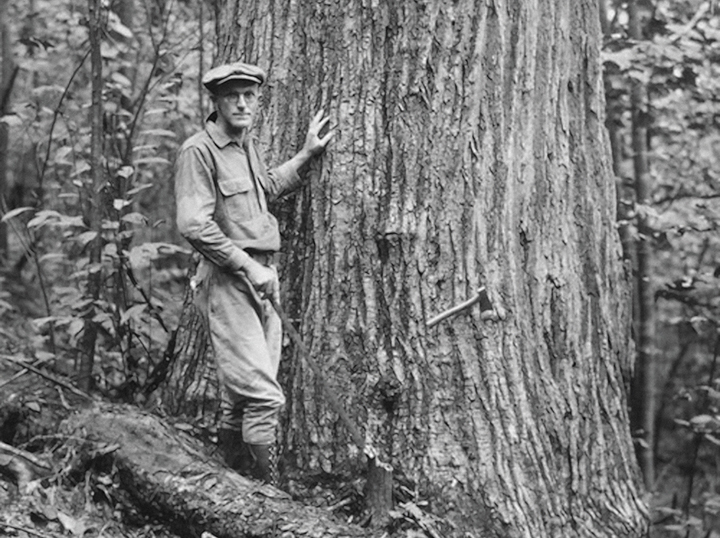News & Community
The Giving Tree
The American chestnut makes a comeback.
At the turn of the 20th century, the Eastern United States was covered in billions of chestnut trees. In some places, such as the Appalachian Mountains and Maryland’s Eastern Shore, where they thrived in sandy soil, one-quarter of all hardwoods were the majestic chestnut, known as the “Redwoods of the East,” as some stood more than 100 feet tall.
Chestnuts produced uniquely rot-resistant timber, and, for three centuries, most homes east of the Mississippi River were built out of their wood. In the summer, so many trees burst into white blossoms that whole swaths of countryside appeared to be draped in cotton. And each fall, so many ripe nuts fell to the ground that they became a staple of the Native-American diet and, later, a roasted holiday favorite, even celebrated in song.
“There was nothing like the American chestnut,” says Gary Carver, president of the Maryland chapter of The American Chestnut Foundation. Then they all began dying.
A crippling fungal pathogen accidently imported from Asia spread rapidly from Maine to Georgia, and by 1950 the blight had all but eliminated the ancient species. “It’s been called one of the greatest forest losses in history,” says Carver, noting that most living Americans have never seen a chestnut.
But remarkably, six decades after their near extinction, the trees appear to be on the cusp of a comeback, including in Maryland, where 250 volunteers oversee 16 orchards dedicated to bringing them back to life. Since the 1980s, the TACF has been breeding a handful of surviving American chestnuts with naturally fungus-resistant Chinese chestnuts. They then “backcross” the successful trees over several generations with the intention of one day creating viable hybrids that are 94 percent American chestnut.
With breeding orchards now in nine local counties, Carver says Maryland is getting close to producing its own new fungus-resistant chestnuts.
“The process takes six generations, but the trees grow quickly,” says Carver, a retired physicist and bird-carving woodworker. “I’m confident we’ll see American chestnuts in the forest again, hosting squirrels and blue jays.”
